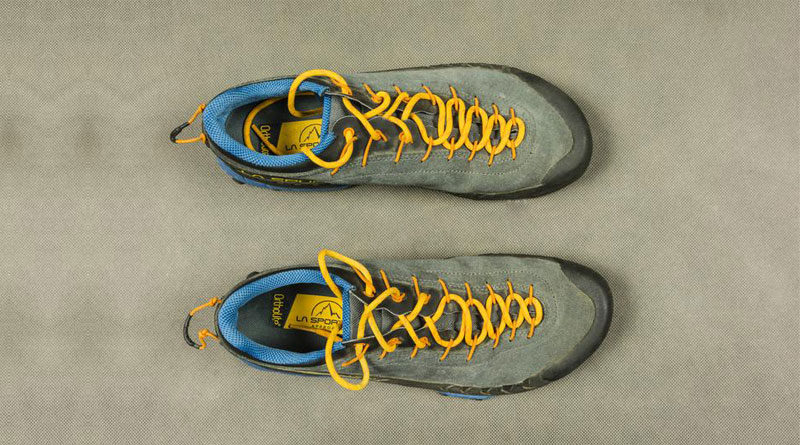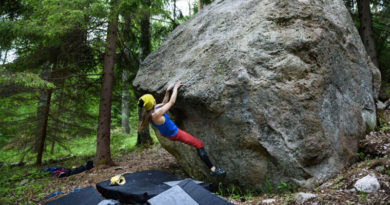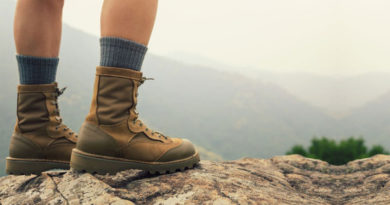How Should Approach Shoes Fit?
Approach shoes should fit snugly without being too tight, with enough room for toes to wiggle and a secure fit around the heel to prevent slippage. The shoe should be flexible enough to allow natural foot movement, but not feel too loose or unstable. It’s important to try on the shoes with the socks you plan to wear and walk around in them for a while to ensure they’re comfortable and supportive. Leave a little extra room in the shoes to accommodate foot swelling during long hikes or climbs.
Snug but not tight
This means they should secure your foot without pinching or squeezing your toes or other parts of your foot. Shoes that are too tight can cause discomfort, blisters, and even injuries. If they’re too big, your foot will slide around inside the shoe, causing instability and potential tripping hazards. A snug fit keeps the shoe in place while providing enough comfort and flexibility to allow for natural foot movement.
Room for toes
It is critical to have enough room for your toes in approach shoes for comfort, stability, and foot health. The shoe’s toe box should be large enough for your toes to wiggle freely without feeling cramped or pinched. When your toes are pressed together, they can cause pain, blisters, and even ingrown toenails. Furthermore, having enough toe box space can improve your balance and stability on technical terrain by allowing you to use your toes for grip and balance. Overall, adequate toe room in approach shoes is critical for comfort, performance, and foot health.
Heel lift
The amount of movement or slippage that occurs between your heel and the back of the shoe is referred to as heel lift. To ensure a secure and stable fit, approach shoes should have minimal heel lift, especially when hiking or climbing on technical terrain. When your heel lifts up inside your shoe, it can result in blisters, discomfort, and even ankle injuries. To reduce heel lift, choose the proper size and fit for your foot, as well as a shoe with a secure lacing system that allows you to adjust the tension around the heel. You can also experiment with adding insoles or heel cups to improve the fit and reduce any extra space in the shoe. Overall, minimizing heel lift is important for maintaining a secure and stable fit in approach shoes, and for reducing the risk of foot injuries.
Width
Choosing the correct width for approach shoes is critical for a comfortable and supportive fit. The width of the shoe should be comfortable, with no pinching or pressure points. Shoes that are too narrow or too wide can cause discomfort, blisters, and even foot injuries. Make sure to choose a shoe that fits the width of your foot, and if you’re unsure, try on shoes in different sizes or widths. Many approach shoes are available in a variety of widths, so it’s critical to find the right fit for your foot. A proper width fit ensures that the shoe provides adequate support and stability for your foot while still allowing for natural foot movement.
Flexibility
When choosing approach shoes, flexibility is an important factor to consider. The shoe should be flexible enough to allow for natural foot movement, but not so loose that it feels unstable. A flexible shoe allows your foot to bend and flex with each step, increasing comfort and performance on long hikes or climbs. It also enables your foot to adapt to various terrains, such as uneven rocks or steep inclines. A shoe that is too flexible, on the other hand, may feel unstable and lack support, increasing the risk of injury or foot fatigue. Choose a shoe that is comfortable and supportive for your foot type and activity level, and that strikes a balance between flexibility and stability.
Conclusion
In conclusion, choosing the right fit for your approach shoes is crucial for comfort, performance, and foot health. A snug but not too tight fit, enough room for your toes, minimal heel lift, the proper width, and the proper balance of flexibility and stability are all important considerations. You can improve your hiking or climbing experience, reduce the risk of injuries or discomfort, and support the natural movement of your feet by choosing approach shoes that fit properly. We recommend that you try on approach shoes in person and follow the advice in this article to find the best fit for your needs. You can enjoy your outdoor adventures to the fullest with the right fit.




